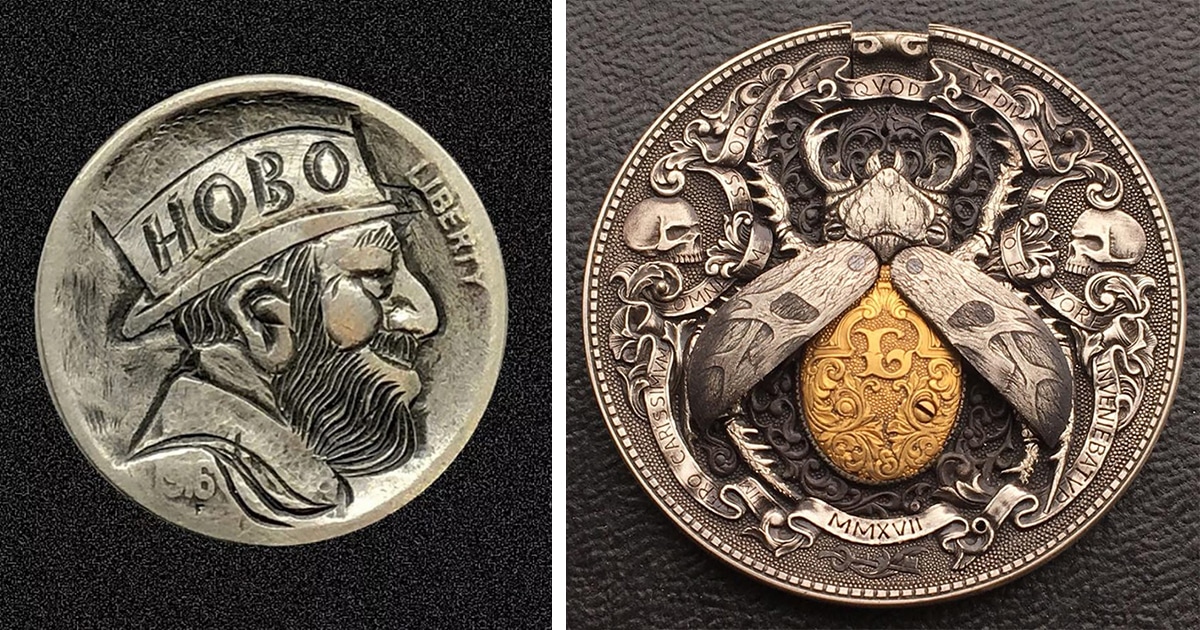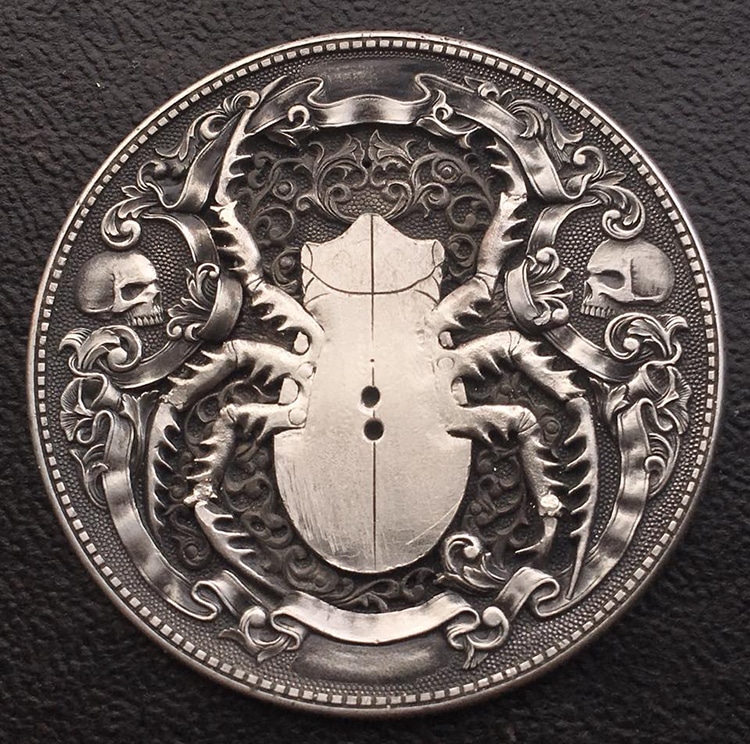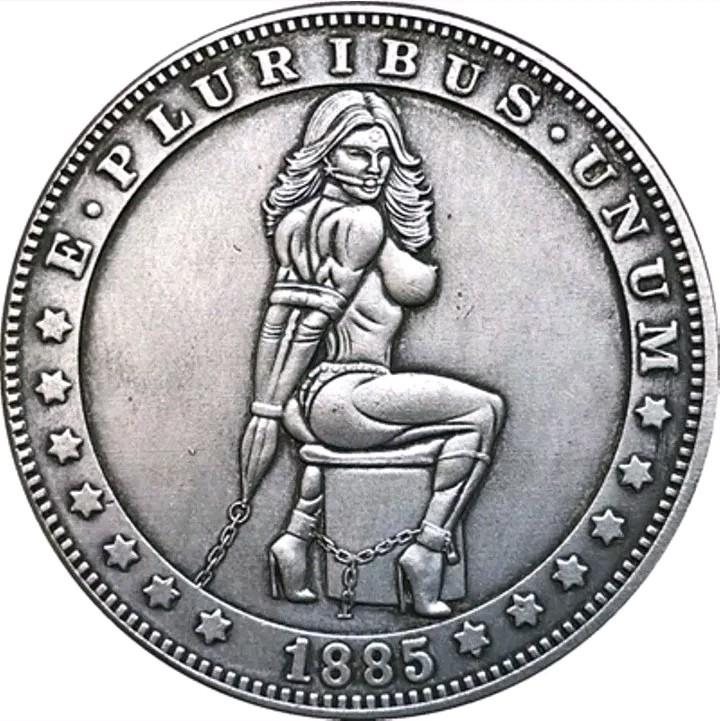Recently, I’ve seen a few replica rounds out there that copy some designs from the old “hobo nickels.” Turns out, these coins have a history that stretches back further than I thought!
These coins were a favorite target of hobo artists in early 20 th century America. The designs in the 2016 Hobo Nickel collection include: Fisherman: The Fisherman is the first design and sticks closest to the original alterations made to Buffalo Nickels. The Hobo fisherman, captured in a similar right-profile relief as Fraser’s original. Hobo Nickel COINS Engraved coins Gold eye Eagle Claw coin free shipping. Hobo nickel 1937 buffalo nickel hand. The hobo nickel is a sculptural art form involving the creative modification of small-denomination coins, essentially resulting in miniature bas reliefs. The US nickel coin was. Check out our hobo coins selection for the very best in unique or custom, handmade pieces from our coins & money shops.

Nickels to dollars. Got a hand problem, so no more hand engraving from me, but feel free to ask questions,and check out my ROBO HOBO coins. Geometric and Op Art computer engrave.
Recently, silver rounds have been issued that honor hobo nickels. “The Fisherman” and “The Train” are shown above.
Sometime around the 1850s, people made use of the Liberty Seated design on the quarter (and later, 20¢ piece). The design was modified to show Liberty sitting on an old-fashioned chamber pot – giving it its nickname, the “potty coin!” By the 1870s, the expression (and the coin used) had changed to “potty dollar.” This expressed dislike for Trade dollar coins, which also featured the altered motto “no free trade.”

.JPG?auto=format&fit=max&w=1200)
Engraved love tokens were also popular during the 1800s. In those days, people bitten by the “love bug” would etch a decorative design into a coin as a way to express their feelings for their beloved.
The art of altered coins really took off, though, when three key pieces of history came together:

- The Union Pacific Railroad was completed
- The start of the Buffalo nickel series
- Creative hobos began “riding the rails” around the time of the Great Depression
Once the Union and Central Pacific Railroads were joined at Promontory Point, Utah on May 10, 1869, a wealth of economic possibility flooded America. But then, just decades later, the Great Depression hit the U.S. As the unemployment rate topped off at over 20%, millions of people began scouring the country for work. But hobos made use of the most efficient transportation available. They hopped on trains to get from point to point, traveling the country for free.
Two early hobo nickel artists stand out among the fold – George Washington “Bo” Hughes and Bertram “Bert” Wiegand. Bert actually taught Bo the craft, having learned it himself around 1913. Though he didn’t carve as many nickels as Bo, Bert’s work was always of superior quality. Bo created a great number of works beginning in the late 1910s until a crippling hand injury in 1957. He did go on to create more hobo nickels beginning in the mid-1960s, but at a slower (and less detailed) pace.
Sure, they did it illegally, but not as a means to freeload. There’s actually a difference between hobos, bums and tramps, even though the terms were used almost interchangeably to describe the homeless during the Great Depression. Hobos are migratory workers – while bums and tramps were non-working beggars. Hobos had the desire to work – they just didn’t have the opportunity!
Hobos created a fascinating area of the hobby when they began carving Buffalo nickels!
As they traveled, hobos looked for ways to fill their time – coins were easy to carry, and carving them took a while. At the time, a quarter was a lot of money. The dime and cent were too small… but oh, the nickel! It was large enough to carve, and inexpensive enough to spare. Plus in 1913, the more delicate Liberty Head nickel design gave way to the broader features of the Buffalo nickel. This made it easier for hobos to make their own unique creations.They’d use crude tools like nails, chisels, and knives to carve away at the existing design. Some elements were saved, and others changed to fit their vision. The obverse (Indian head) design was changed into any number of portraits – from family members, to clowns, to hobos in derby hats. It wasn’t often that the reverse (buffalo) would be carved. But when it was, it morphed into fantastic images like a man carrying a knapsack, donkeys – even a train car carrying hobos!
A more modern era
A newer style of hobo nickels emerged from 1980 on – around the same time Del Romines published his book, Hobo Nickels. These newer pieces are exciting because they boast more detail and a wider variety of designs, thanks to newer tools and technology. Betty the yetti slot. But at the same time, they lack the unique character of the original hobo nickels.
Today, there are still hobo nickel carvers out there! Have you ever come across one of these fun pieces?
Handmade Carved Hobo Nickel Coins
A hobo nickel is a modified coin that typically bears a portrait or other image that integrates well with the original image on the coin. Techniques for carving these coins have changed over time, but the tools needed and materials required are typically inexpensive. The story behind these nickels goes that a traveling man without income could take a single nickel and turn it into a work of art and then exchange that art for more than the nickel was worth. Almost all hobo nickels bear faces of some kind, although some modify the non-face image on the nickel to create animals or other shapes. Some people collect hobo nickels, and a history of these items and their creators can be extracted from particular artistic conventions used by specific artists.
Coin engraving as an art form predates the emergence of the hobo nickel, but the physical qualities of nickels made this coin highly popular among engravers. Nickels are soft, large, and easy to work with, making this an ideal medium for engravers. Before hobo nickels, potty coins were the most popular engraving coins. Many of the techniques used on these coins carried forward into nickel carving.
The art found on a hobo nickel does depend in part on the art provided on the nickel. This means that as nickel designs changed over time, the art that was carved into those designs changed as well. Most nickels bear a profile portrait of some type because of the large face found on buffalo nickels. The features of this face are often altered in the carving process, changing the nose, ear, and beard. It is also possible to carve the buffalo side of a buffalo nickel, creating trains, camels, or other figures.
Although it is not uncommon to find a signed hobo nickel, some nickels are thought to be made by the same artist because they bear similar artistic qualities. Artists would often carve ears, noses, or beards in highly unique ways, making it easy to identify coins carved by the same artist. The identity of these carvers is not known, but by tracing their artwork it becomes possible to know something about their life.
Hobo Coins Wikipedia
Coin engraving is still a popular art form, and current coin engravers do still work with nickels. A modern hobo nickel is typically not used as an item for exchange, but rather purely as art. Some engravers add special materials to the nickels, such as gold or enamel. With special tools, additional designs and more details become possible.